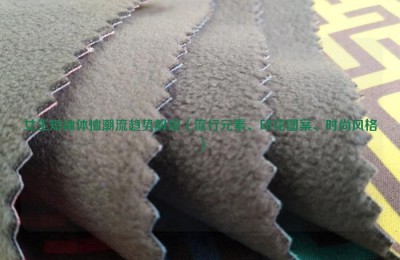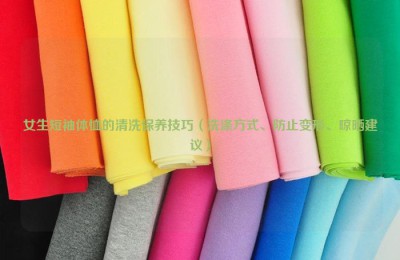According to China Customs statistics, the national yarn import and export volume in 2017 was US$19.55 billion, a year-on-year increase of 7.2%, and the growth rate further expanded. The import and export volume was 7.364 million tons, a year-on-year increase of 4.3%. Among them, the export value was US$11.7 billion, an increase of 7.8%; the export quantity was 4.738 million tons, a year-on-year increase of 5.6%; the average export unit price was US$2.47/kg, a year-on-year increase of 2.1%. The import value was US$7.85 billion, a year-on-year increase of 6.2%; the average import unit price was US$3/kg, a year-on-year increase of 4.1%.
1. The main yarn categories maintained growth in December
In December, yarn exports amounted to US$1.1 billion, a year-on-year increase of 25.4%. All major categories maintained double-digit growth. Exports of cotton yarn and chemical fiber yarn were US$140 million and US$760 million respectively, a year-on-year increase of 13.7% and 25.9%. Among them, the export quantity of cotton yarn was 35,000 tons, an increase of 13.3%, and the price was US$4.1/kg, an increase of 0.4%. The export quantity of chemical fiber yarn was 308,000 tons, an increase of 11.9%, and the price was US$2.5/kg, an increase of 12.5%.
2. Export growth in major markets has been steady, with significant growth in countries along the Belt and Road
ASEAN is my country’s largest yarn export market, accounting for 17.4% of yarn exports. For the whole year, my country’s exports to ASEAN were US$2.03 billion, an increase of 17.5%, and the growth rate continued to expand compared with the first half of the year. Among ASEAN countries, my country exports the most yarn to Vietnam, ranking third in the yarn export market, accounting for 7.4%. For the whole year, my country’s exports to Vietnam were US$860 million, an increase of 16.1%. Among other ASEAN countries, exports to the Philippines grew the fastest, with exports worth US$260 million, an increase of 86%, and the growth rate further expanded from the previous month. The country’s ranking in export markets has also risen to 14th from 21st in 2015, surpassing Thailand and Cambodia.
Among other Asian markets, Bangladesh ranks second in my country’s yarn export market, accounting for 7.9%. Throughout the year, my country’s exports to Bangladesh increased slightly, with an export volume of US$930 million, an increase of 13%.
Among the countries along the Belt and Road, exports to Turkey and Russia have grown significantly, with the two countries ranking 6th and 21st respectively. Among them, exports to Turkey were US$600 million, an increase of 21.8%, accounting for 5.1%. Exports to Russia grew significantly, with export volume reaching US$140 million, an increase of 30.1%.
Among other markets, exports to the United States were US$590 million, a year-on-year increase of 16.1%. Exports to the EU were US$1.19 billion, an increase of 3.9%. Exports to Hong Kong were US$1.04 billion, down 16.5%. Exports to Japan were US$370 million, down 0.2%, and the decline narrowed.
3. Main coastal export provinces maintain growth
In terms of export volume, coastal provinces are the main force in yarn exports. The top five provinces and cities are Zhejiang, Jiangsu, Fujian, Shandong, and Guangdong, accounting for 78% in total. Except for Guangdong, which dropped by 2.1%, all other provinces maintained growth. Among them, Zhejiang and Fujian both experienced rapid export growth, with export volumes of US$3.87 billion and US$990 million respectively, an increase of 15% and 29.3% respectively. The exports of Jiangsu and Shandong were US$2.49 billion and US$960 million respectively, an increase of 3.1% and 3.5% respectively.
From the perspective of export unit price, among the top five exporting provinces, except for Shandong, where the unit price dropped slightly by 2.5%, the average unit price of the remaining four provinces maintained an increase. Among them, the average unit price in Fujian was US$1.91/kg, an increase of 22%. Guangdong’s export unit price was the highest, with an average of 5.1 US dollars/kg, an increase of 5.6%. Among the remaining provinces, Inner Mongolia and Ningxia had higher export unit prices, at US$51/kg and US$24.6/kg respectively, a decrease of 19.6% and 66.6% respectively.
4. Unit prices of main categories fluctuated between rises and falls
The export unit prices of silk threads and chemical fiber yarns increased throughout 2017, reaching US$43.4/kg and US$2.3/kg respectively, up 16.7% and 7.2% year-on-year. The export unit prices of cotton yarn and wool animal hair yarn both declined, by 4% and 5.8% respectively.
V. Overview of national cotton yarn imports throughout the year
(1) Domestic cotton yarn imports tend to be stable
Since December, the expansion of the global manufacturing industry has slowed down, and foreign cotton prices have stabilized; with the end of domestic cotton rotation, the price difference between domestic and foreign cotton has gradually narrowed, and my country’s cotton and cotton yarn imports have stabilized.
According to China Customs statistics, my country’s cotton yarn imports in 2017 were US$5.46 billion, an increase of 6.5%, accounting for 69.6% of total yarn imports and 21.9% of total textile and apparel imports. The import volume was 1.983 million tons, a slight increase of 0.6% year-on-year. The import price was US$2.75/kg, an increase of 5.9%.
(2) Vietnamese yarn is still popular
In recent years, a large number of companies have invested and set up factories in Southeast Asia. The top five sources of imported cotton yarn are all from Southeast Asia. Vietnam is one of the largest investors. my country’s cotton yarn imports from Vietnam continue to grow, accounting for 37%. It is currently my country’s largest import source of cotton yarn. This year, China imported 716,000 tons of cotton yarn from Vietnam, a year-on-year increase of 14.5%, accounting for 36.1% of the total cotton yarn imports, and the proportion was basically the same as in the first half of the year.
In addition to Vietnam, my country also imports cotton yarn from India, Pakistan, Indonesia, Taiwan, Uzbekistan and other countries. Among them, imports from Indonesia, Uzbekistan, and Malaysia grew rapidly, with increases of 29%, 16.1%, and 30.4% respectively.
(3) The price difference between domestic and foreign cotton narrowed, and the quantity of cotton yarn imports fell
As of December 29, the international cotton price (CotlookA) is about 14,874 yuan/ton, and the domestic cotton price (3128B) averages 15,699 yuan/ton. The price difference between the two is about 825 yuan/ton, which is 1886 yuan/ton higher than that in May.The price difference per ton narrowed significantly. As domestic cotton reserves are released, the market supply is sufficient, and the import volume of cotton yarn has declined before the end of the year.
AAA anti-UV fabric network VBJYTUJGHNH






